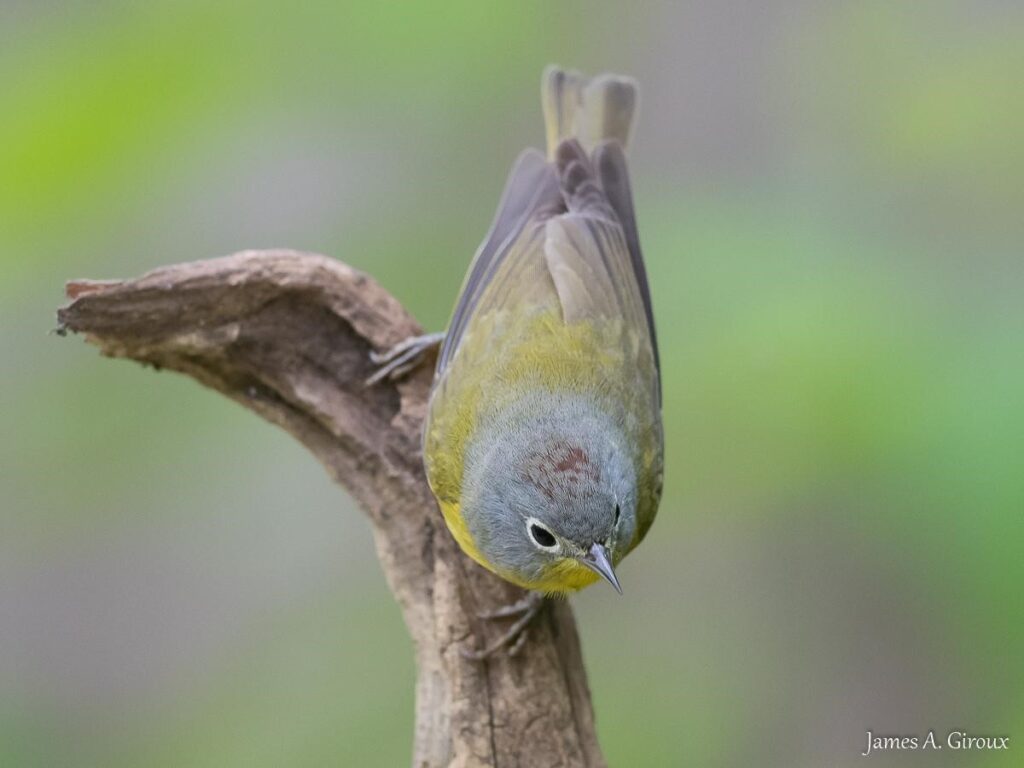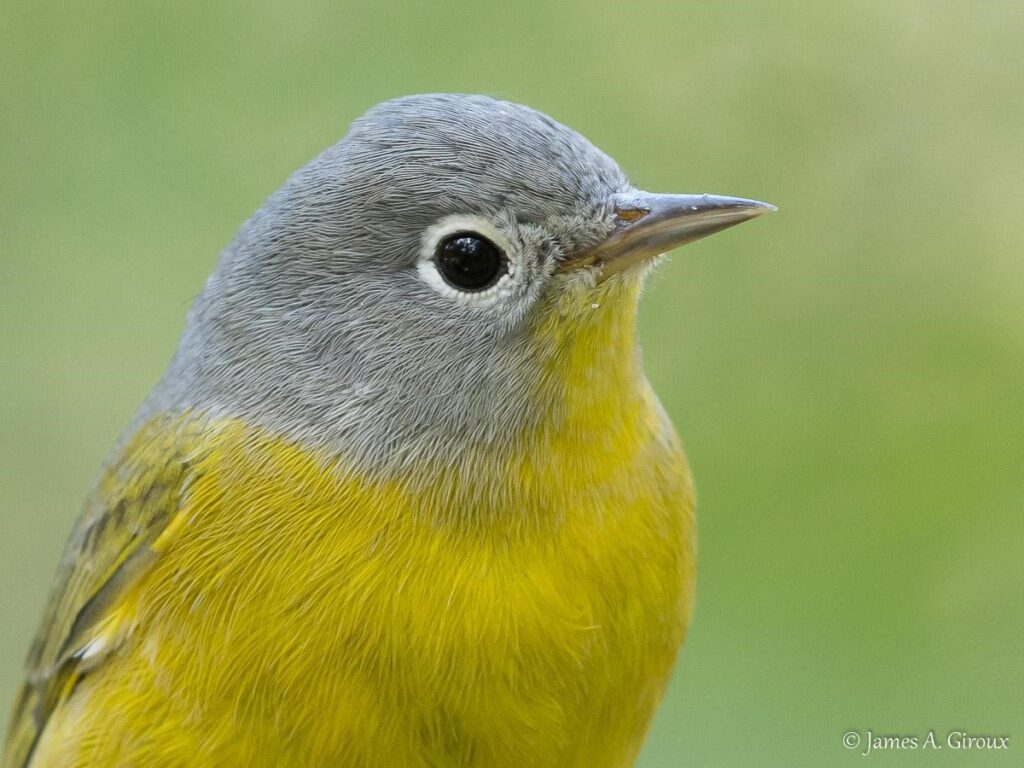Nashville Warbler
Leiothlypis ruficapilla
Content and photos by James Giroux
When we think of migrant Warblers in Central Texas we generally think of the months April, May and September. But in the fall, the Nashville Warbler is apparently more reluctant to leave the U.S. than other non-resident Warblers. It can be seen in our area well into October, and even into November.
Like most Warblers it is an attractive bird, and sports a yellow breast, greenish back, blue-gray head and a full white eye ring – giving it a wide-eyed look. There is one other field mark that you don’t normally see. On the crown, there are dark rufous-colored feathers that are often hidden. In fact, the scientific name Leiothlypis ruficapilla refers to this field mark – ruficapilla meaning reddish crown.

In 1811, the famous ornithologist Alexander Wilson just happened to be in Nashville, TN when he first described and named the bird. It’s not the best name, because it’s only a migrant through the state of Tennessee. And, it migrates through all of the other lower 48 states as well. Trivia question: Name five North American birds named for Wilson. Hint: One of them is a pelagic (sea bird) Answers at the bottom of this article.

As the range map shows, there are two distinct breeding areas. One in the northwest, and one from central to eastern Canada and down into the northeastern U.S.. In the past, these two populations were considered as two species. The western bird was called the Calaveras Warbler. It is brighter than its eastern cousin, and has a longer tail which it often bobs while foraging.
If you have a backyard in the Austin area, consider building a water feature for birds to bathe in. I have constructed a feature in my yard, and have had great success with Warblers, particularly in October with the Nashville Warbler. All the photos in this article were taken in my backyard from my bird blind.

On several occasions I have had at least six simultaneous Nashville Warblers – all splashing in the water and having a great time. So, if you have a yard, build yourself a water feature. If not, there is a nice water feature you can visit at Travis Audubon’s Blair Woods Sanctuary.

Trivia question answers:
Wilson’s Warbler
Wilson’s Phalarope
Wilson’s Plover
Wilson’s Snipe
Wilson’s Storm-Petrel
Sources:
https://allaboutbirds.org
https://eBird.org




